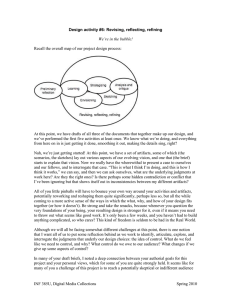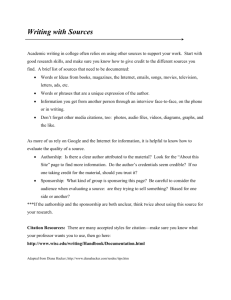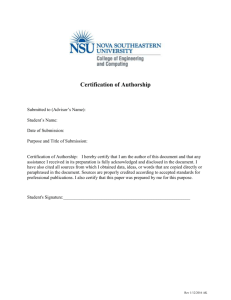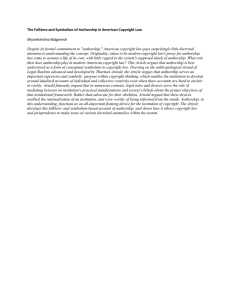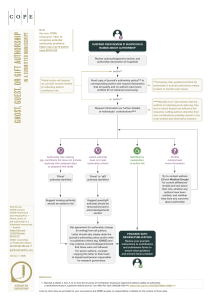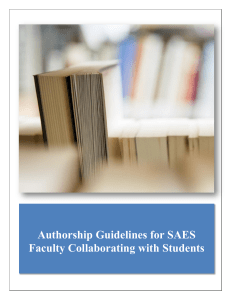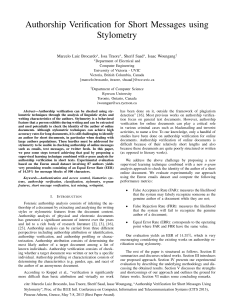Design activity 6: Revise, reflect, refine
advertisement
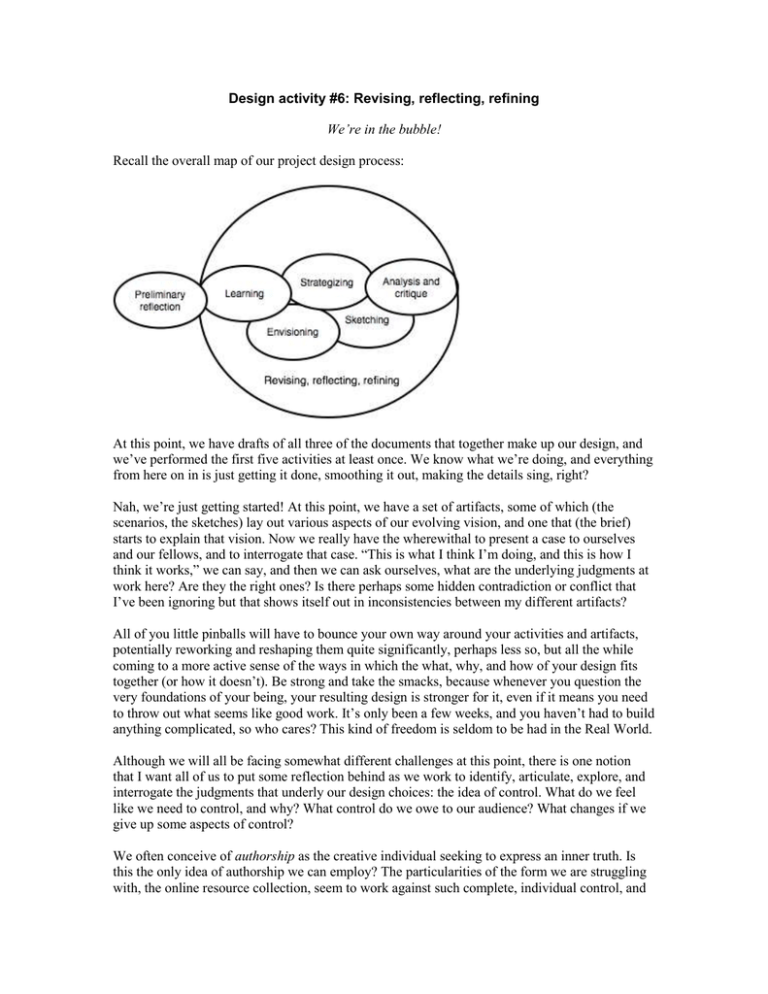
Design activity #6: Revising, reflecting, refining We’re in the bubble! Recall the overall map of our project design process: At this point, we have drafts of all three of the documents that together make up our design, and we’ve performed the first five activities at least once. We know what we’re doing, and everything from here on in is just getting it done, smoothing it out, making the details sing, right? Nah, we’re just getting started! At this point, we have a set of artifacts, some of which (the scenarios, the sketches) lay out various aspects of our evolving vision, and one that (the brief) starts to explain that vision. Now we really have the wherewithal to present a case to ourselves and our fellows, and to interrogate that case. “This is what I think I’m doing, and this is how I think it works,” we can say, and then we can ask ourselves, what are the underlying judgments at work here? Are they the right ones? Is there perhaps some hidden contradiction or conflict that I’ve been ignoring but that shows itself out in inconsistencies between my different artifacts? All of you little pinballs will have to bounce your own way around your activities and artifacts, potentially reworking and reshaping them quite significantly, perhaps less so, but all the while coming to a more active sense of the ways in which the what, why, and how of your design fits together (or how it doesn’t). Be strong and take the smacks, because whenever you question the very foundations of your being, your resulting design is stronger for it, even if it means you need to throw out what seems like good work. It’s only been a few weeks, and you haven’t had to build anything complicated, so who cares? This kind of freedom is seldom to be had in the Real World. Although we will all be facing somewhat different challenges at this point, there is one notion that I want all of us to put some reflection behind as we work to identify, articulate, explore, and interrogate the judgments that underly our design choices: the idea of control. What do we feel like we need to control, and why? What control do we owe to our audience? What changes if we give up some aspects of control? We often conceive of authorship as the creative individual seeking to express an inner truth. Is this the only idea of authorship we can employ? The particularities of the form we are struggling with, the online resource collection, seem to work against such complete, individual control, and potentially against traditional ideas of authorship. We can select resources according to certain criteria, we can put the resources into defined structures, we can describe them in particular ways, but we cannot dictate what the resources say or how they say it. (They are videos, of varying quality, for better or worse.) Too, we cannot control our audience’s path through the collection, and if we do not acknowledge and respect both their likely information needs and their existing expectations for this genre of artifact, we will lose all hope of control and persuasion as they abandon our carefully crafted work for some other of the Web’s glittery mirages. And, don’t we really want our audience to be in intellectual control, as well? We don’t want to imprint our views on passive automatons; we want the audience to take us seriously, to understand and consider what we say, to find it compelling, but ultimately to synthesize their own position, to move the conversation forward as an equal partner. Amidst all this, there is the control exerted by external constraints: the goals of the class, and the assignment, as emphasized by me; the design aspects foregrounded by the video toolkit (information architecture and content design, but not visual or interface design). How do these as well affect your working conceptualization of authorship in this context, and “configure” you as collection designers, in addition to the form of collection experience as you hope to write it? So, for next week, April 7, I want everyone to reflect on these intersecting notions of control and how it is playing into your design judgments. Be prepared to participate in a class discussion that explores how ideas of authorship and control have shaped your project direction and decisions. How does our common idea of what an author is and does work for this project? Which concepts do you choose to adapt, and how are you adapting them: the idea of what an author is and does, the idea of what a digital library is and does, the idea of what a digital library audience is and does? Or what else might need to give? (Psst...part of the goal here is to get you thinking in ways that you can also use to inform the reflective essay assignment. To remind yourself of assignment particulars, in terms of deliverables, goals, and evaluative criteria, check the course Web site/syllabus...)
